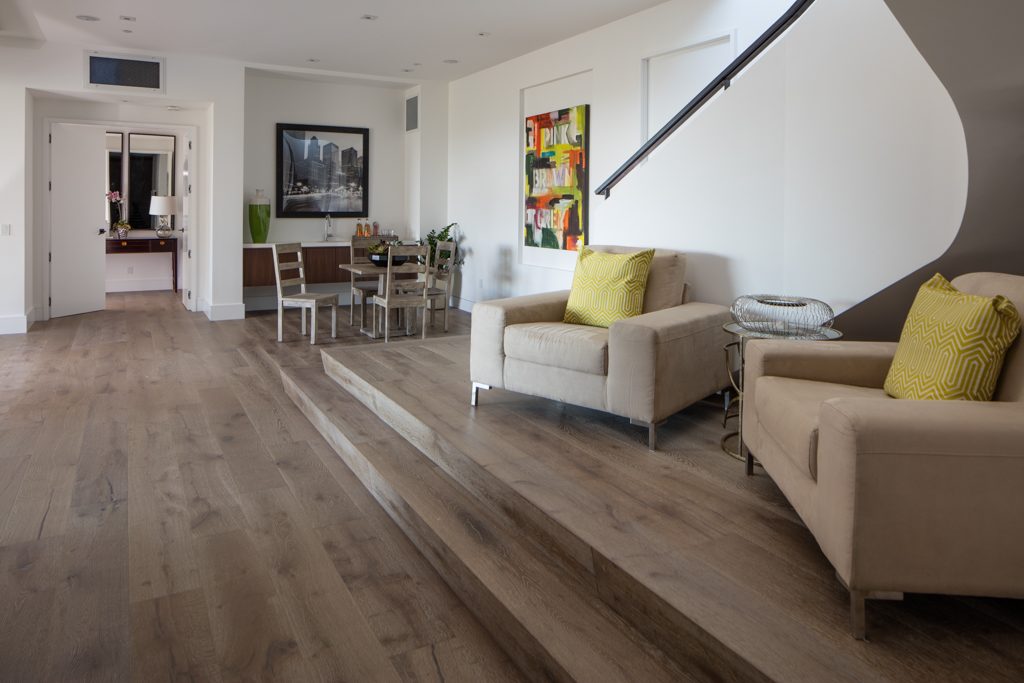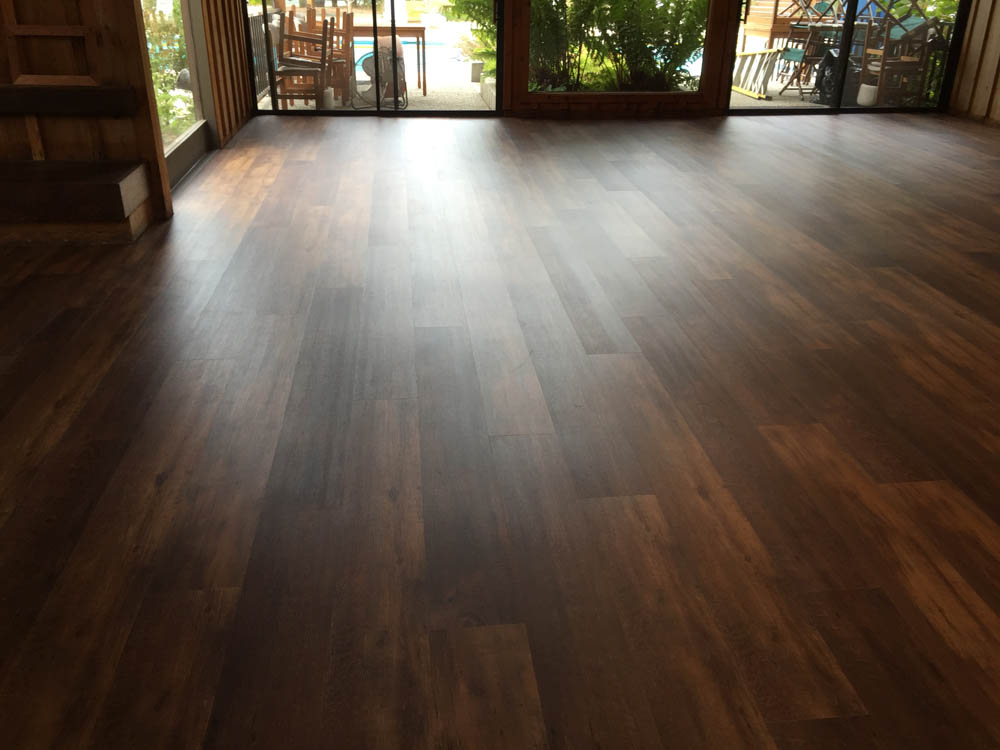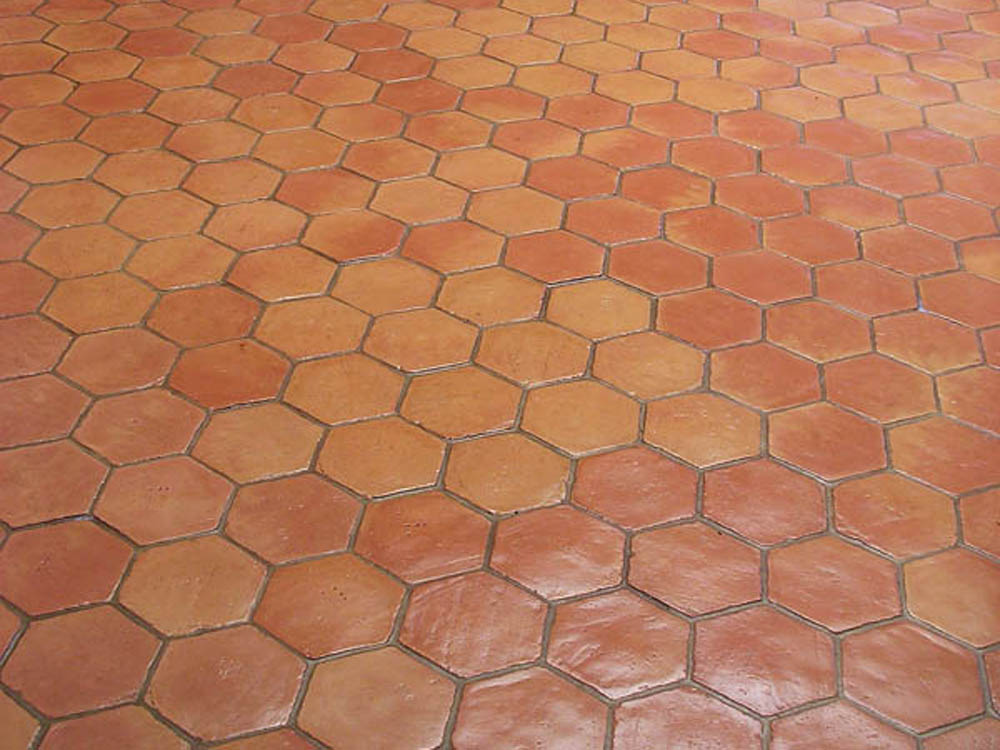Low-Impact Floors, Part 2: Recycled Flooring Options

By cutting down on both landfill waste and resource consumption, recycled flooring is as Green as it gets. Photo: Baila Floors (2016)
In the previous installment of our “Low-Impact Floors” series, we talked about flooring made from sustainably sourced materials. In this second half, we’ll cover an even more eco-friendly option: recycled flooring. If sustainable flooring ensures that harvesting and manufacturing are performed in an ecologically sound manner, recycled flooring takes things a step further by eschewing the consumption of new materials in favor of reusing existing ones. Here are a few of the top recycled flooring options:

PET Berber carpet is made of recycled bottle caps and tires. Photo: City Carpets (2016)
PET Berber carpet
Patterned after the traditional hand-woven carpets of the North African natives of same name, Berber carpets are characterized by their distinctive loop pile. While Berber-style carpets are manufactured from many different materials, one is particularly eco-friendly: polyethylene terephthalate (PET). It’s actually made of recycled bottle caps and tires, which gives it one of the most unique compositions of any type of flooring. This may not seem like something you’d want to walk on without shoes, but the actual product is much softer than it sounds. By repurposing plastic and rubber waste, PET Berber carpets cut down on both resource consumption and the amount of non-biodegradable material that ends up in landfills.
In addition to being good for the environment, PET Berber carpet is good for the home due to its exceptional durability and stain resistance. It does, however, have a few vulnerabilities, including snagging, crushing (when a carpet’s fibers bend down and don’t reshape, especially after furniture has been resting on it) and shading (when fibers lay down in one direction, causing the carpet to look dirty or shiny from certain perspectives). However, if being a responsible steward of the earth’s resources is a priority for you, the pros certainly outweigh the cons for this Green carpet choice.

Reclaimed hardwood reuses old flooring planks and structural wood from defunct buildings. Photo: Baila Floors (2016)
Reclaimed hardwood
In our previous article, we listed FSC-certified hardwood as a good sustainable option for those who love the look and feel of authentic lumber. However, if you want to make even less of an impact with your floor, consider building it out of reclaimed wood. Whether milled from structural beams and timbers in defunct industrial spaces or salvaged from old tongue-and-groove plank floors, reclaimed hardwood flooring is a great way to give old timbers a second life and reduce the amount of new growth that’s cut down.

Recycled tile is available in a myriad of colors and compositions. Photo: Love Your Floors (2016)
Recycled tile
While flooring tiles are often made of natural materials, you can make your floor even Greener by using recycled tiles, which come in a wide variety of compositions and colors. Recycled metal tiles provide a modern and texturally intriguing dynamic that’s ideal for offsetting spaces where wood is a dominant feature. Recycled glass tiles bring a colorful iridescence to any room, while recycled clay or cement tiles strike an authentic classical tone. There are even recycled rubber tiles, which are good choices for moisture-prone areas of the home because they’re impervious to water.
There’s one other type of recycled tile you might not have thought of: carpet tiles. Composed of previously used carpeting, one of the best things about these tiles is the design possibilities, as they can be mixed and matched to create custom patterns or color schemes. In addition, carpet tiles’ modular character allows them to be replaced piecemeal, making it easy to swap out damaged or stained sections. Even better, at the end of their usable life, they can be recycled yet again for re-use as carpeting.
To find a Diamond Certified flooring company that can install your sustainable or recycled floor, visit www.diamondcertified.org.